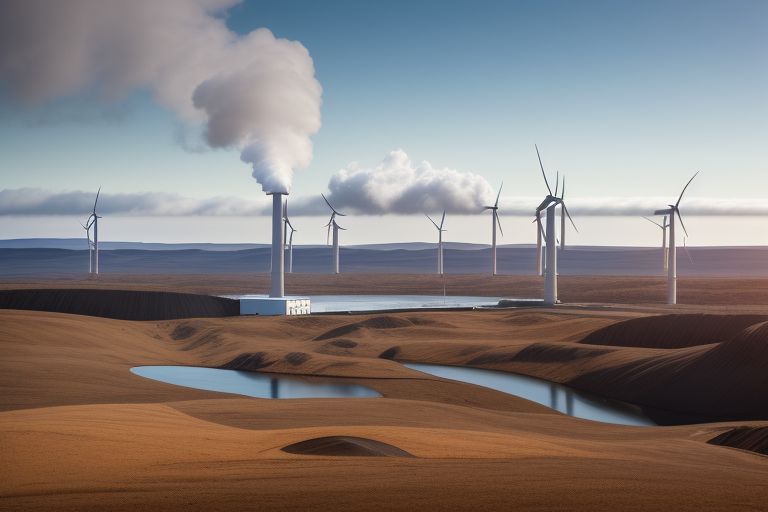- [email protected]
- +254 723 065019
- Mon - Sat 9:00 AM - 5:00 PM
- Login or Register
- Favorites
8.3 Wind and Geothermal Energy Solutions
Lesson 8.3: Wind and Geothermal Energy Solutions
Welcome to Lesson 8.3, where we explore the dynamic fields of wind and geothermal energy solutions. In this lesson, we will delve into the principles behind wind and geothermal energy, their practical applications, and their roles in sustainable construction and energy systems.
Wind energy harnesses the power of the wind through turbines, converting kinetic energy into electrical power. We’ll look at how wind turbines operate, their various types, and how they can be integrated into both small-scale and large-scale projects.
Geothermal energy, on the other hand, taps into the Earth’s internal heat. By accessing this stable and reliable source of energy, we can provide heating, cooling, and electricity in an environmentally friendly manner. We will examine the methods for utilizing geothermal energy, from ground-source heat pumps to geothermal power plants, and discuss their benefits and practical considerations.
Throughout this lesson, you’ll gain a comprehensive understanding of how these renewable energy solutions work, their applications in different settings, and their contribution to a sustainable future. Whether you’re interested in enhancing energy efficiency in buildings or exploring new avenues for clean energy, this lesson will provide valuable insights and practical knowledge.
Objective:
By the end of this lesson, learners will gain a comprehensive understanding of wind and geothermal energy solutions. They will explore how these renewable energy sources can be effectively applied in construction projects to enhance sustainability and energy efficiency. Specifically, learners will:
- Understand Wind Energy Solutions: Gain insights into how wind energy is harnessed, the types of wind turbines available, and their applications in both residential and commercial settings.
- Explore Geothermal Energy Solutions: Learn about the principles of geothermal energy, the different technologies used to harness this energy, and their applications for heating, cooling, and power generation.
- Evaluate Benefits and Challenges: Assess the benefits of integrating wind and geothermal energy into construction projects, including energy savings, environmental impact, and long-term sustainability. Additionally, identify and understand the challenges and considerations involved in their implementation.
- Apply Knowledge to Projects: Develop the skills to integrate wind and geothermal energy solutions into building designs and construction plans, considering factors such as site suitability, cost, and regulatory requirements.
This lesson will equip you with the knowledge and tools to effectively incorporate these renewable energy solutions into modern construction projects, paving the way for more sustainable and energy-efficient buildings.
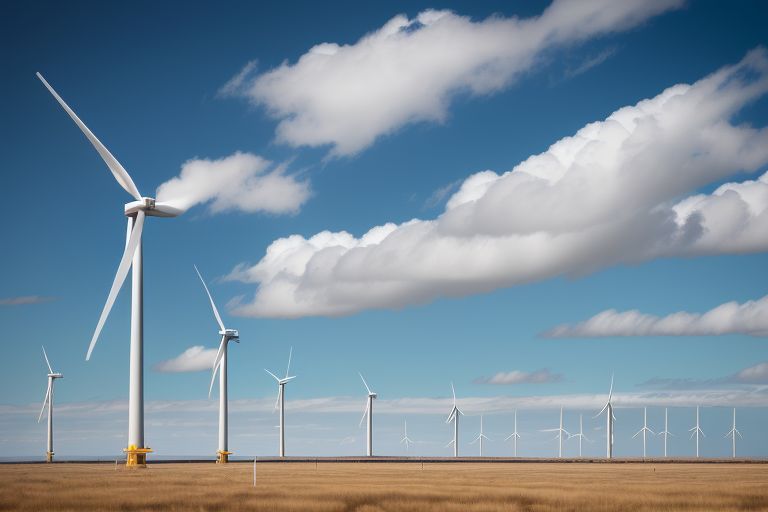
1. Introduction to Wind Energy
Wind energy harnesses the power of the wind to generate electricity, making it one of the most rapidly growing sources of renewable energy. By converting the kinetic energy of wind into electrical power, wind energy systems provide a sustainable and environmentally friendly alternative to traditional fossil fuels.
In this section, we will explore the fundamental concepts of wind energy, including how wind turbines work and the different types of wind energy systems. We’ll discuss the advantages and challenges associated with wind energy, and examine its role in modern energy infrastructure.
Understanding wind energy is crucial for integrating this technology into construction projects and making informed decisions about sustainable energy solutions. Whether you’re involved in designing new buildings or retrofitting existing structures, knowledge of wind energy will help you leverage this clean and abundant resource to enhance energy efficiency and reduce environmental impact.
Key Points:
a. Definition:
Wind energy is produced by harnessing the kinetic energy of moving air through wind turbines. These turbines have large blades that rotate when wind flows over them, converting kinetic energy into mechanical energy. This mechanical energy is then transformed into electrical power via a generator within the turbine. As a renewable energy source, wind power is abundant, clean, and does not rely on finite natural resources, nor does it produce harmful emissions, making it a sustainable solution for electricity generation.
b. Importance:
Wind energy is one of the most rapidly expanding sectors in the renewable energy industry, playing a pivotal role in global strategies to combat climate change. The growth of wind energy is fueled by its capacity to significantly reduce greenhouse gas emissions and lessen dependence on fossil fuels. By contributing a large and growing share of the world’s electricity from renewable sources, wind energy helps to lower carbon footprints, bolster energy independence, and drive the shift towards a sustainable and resilient energy future. This makes wind energy a crucial component of the clean energy landscape and a key factor in reducing global environmental impact.
Reflection Element:
Reflect on how wind energy can be utilized in construction projects to enhance sustainability and energy efficiency.
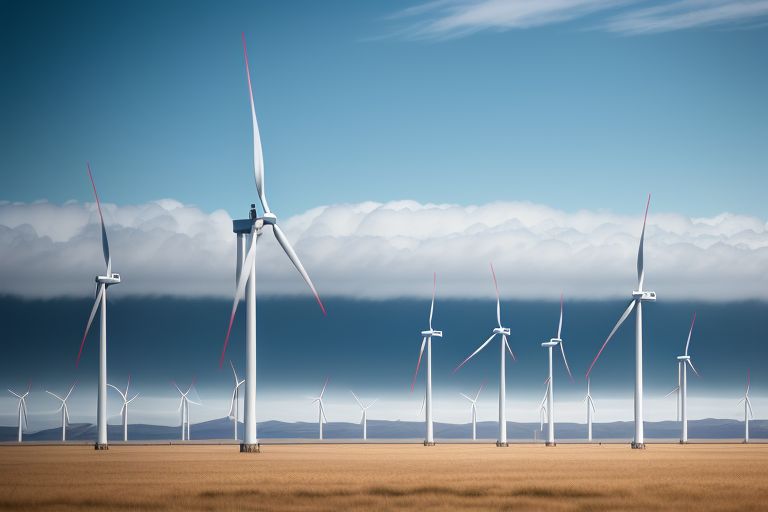
2. Wind Energy Technologies and Applications
Wind energy technologies have evolved rapidly, offering diverse solutions that can be tailored to various scales and environments, from large wind farms to small-scale residential systems. In this section, we will explore the different types of wind turbines, their technological advancements, and how they can be applied in various settings. Understanding these technologies and their applications provides valuable insights into how wind energy can be effectively harnessed and integrated into construction projects, contributing to sustainable building practices and cleaner energy production.
Key Points:
a. Types of Wind Turbines
1. Horizontal-Axis Wind Turbines (HAWTs):
Horizontal-Axis Wind Turbines (HAWTs) are the most prevalent and widely recognized type of wind turbines. Their design features blades that rotate around a horizontal axis, resembling the traditional windmills used historically for various purposes.
Key Features:
-
- High Efficiency: HAWTs are known for their high efficiency in converting wind energy into electricity. This efficiency is attributed to their aerodynamic blade design and ability to capture wind energy from a wide range of wind speeds.
- Large-Scale Deployment: These turbines are commonly used in large-scale wind farms, both onshore and offshore. Their high efficiency and effectiveness make them ideal for harnessing significant amounts of wind energy, particularly in areas with consistent and strong winds.
- Tall Towers: To maximize their performance, HAWTs are typically mounted on tall towers. This elevation allows them to access higher wind speeds and avoid turbulence caused by ground-level obstacles. The height of the tower is crucial for optimizing energy capture.
- Clear, Open Spaces: For optimal operation, HAWTs require clear, open spaces free from obstructions. This ensures that the wind flows smoothly over the blades, enhancing their efficiency and overall energy production.
HAWTs are well-suited for locations with steady wind patterns, such as coastal areas, elevated terrains, and open plains. Their design and efficiency make them a preferred choice for utility-scale wind farms, contributing significantly to renewable energy generation and helping to meet the growing demand for clean power sources.
2. Vertical-Axis Wind Turbines (VAWTs):
Vertical-Axis Wind Turbines (VAWTs) feature blades that rotate around a vertical axis, offering distinct advantages in capturing wind energy from various directions without the need for constant reorientation.
Key Features:
-
- Directional Flexibility: Unlike Horizontal-Axis Wind Turbines (HAWTs), VAWTs can capture wind from any direction. This capability is especially beneficial in areas where wind patterns are inconsistent or turbulent, as the turbine does not need to be aligned with the wind direction.
- Compact Design: VAWTs are generally smaller and more compact than their horizontal-axis counterparts. This design makes them ideal for integration into urban environments and rooftops where space is limited and aesthetic considerations are important.
- Ease of Installation: Due to their smaller size and simpler design, VAWTs can be installed in a variety of locations, including on top of buildings and in densely built areas. Their vertical axis design also means they do not require a yaw mechanism to adjust their orientation, simplifying their installation and maintenance.
- Performance in Turbulent Winds: VAWTs are particularly effective in environments with variable wind directions and speeds, such as urban areas with obstructions that create turbulence. Their design allows them to function efficiently in these challenging conditions.
Applications:
-
- Urban Environments: VAWTs are well-suited for urban settings where space is limited, and wind conditions can be unpredictable. Their compact size and ability to capture wind from any direction make them ideal for installation on building rooftops and in small, open areas.
- Rooftops and Small-Scale Installations: Their size and efficiency make VAWTs a good choice for residential and commercial buildings looking to supplement their energy needs with wind power.
- Variable Wind Conditions: VAWTs excel in locations where wind directions and speeds fluctuate, providing a reliable energy source in less ideal wind conditions.
Advantages:
VAWTs offer unique benefits for localized and urban wind energy applications. Their ability to operate efficiently in varying wind conditions, along with their compact footprint, makes them an attractive option for integrating wind power into areas where traditional horizontal-axis turbines may not be feasible.
b. Configurations
1. Onshore Wind Farms:
Onshore wind farms are large-scale installations of wind turbines situated on land, typically in regions with high wind potential. These farms play a crucial role in generating renewable energy and contribute significantly to efforts in reducing greenhouse gas emissions and enhancing energy sustainability.
Key Features:
-
- Location: Onshore wind farms are usually positioned in rural or remote areas where wind speeds are higher and more consistent. This placement optimizes wind energy capture and minimizes the impact on densely populated regions.
- Scale: These farms consist of multiple wind turbines arranged in clusters or arrays. The number and configuration of turbines are designed to maximize energy generation based on the wind resource available in the area.
- Grid Connection: Onshore wind farms are connected to the local or national electricity grid. This connectivity allows the substantial amounts of electricity generated to be distributed to homes, businesses, and industrial facilities, providing a reliable source of renewable power.
- Energy Generation: The turbines in onshore wind farms convert kinetic energy from the wind into electrical energy. The scale of these installations enables them to generate significant amounts of power, making them a key component in the transition to renewable energy sources.
Applications:
-
- Electricity Supply: Onshore wind farms provide large quantities of electricity, helping to meet the energy demands of various sectors. They are instrumental in powering residential areas, commercial buildings, and industrial operations.
- Grid Stability: By contributing substantial amounts of renewable energy to the grid, onshore wind farms help stabilize energy supply, reduce dependence on fossil fuels, and lower overall greenhouse gas emissions.
Benefits:
-
- Environmental Impact: Onshore wind farms significantly reduce greenhouse gas emissions by replacing conventional fossil fuel-based power generation. This helps mitigate climate change and promotes environmental sustainability.
- Economic Growth: The development of onshore wind farms creates job opportunities in manufacturing, installation, and maintenance. It also stimulates local economies through investment and infrastructure development.
- Energy Security: By harnessing local wind resources, onshore wind farms enhance energy security and reduce dependence on imported fuels. This contributes to a more resilient and self-sufficient energy system.
Onshore wind farms are an effective and scalable solution for harnessing wind energy, offering substantial benefits for both environmental sustainability and energy security. Their ability to generate large amounts of renewable electricity makes them a critical component in the global transition towards clean energy.
2. Offshore Wind Farms:
Offshore wind farms are large-scale wind energy installations located in bodies of water, usually on continental shelves. These facilities leverage the advantages of marine environments to generate substantial amounts of renewable electricity.
Key Features:
-
- Location: Offshore wind farms are positioned in open water areas, typically on continental shelves where wind speeds are higher and more consistent. This marine setting allows turbines to capture stronger and more reliable winds compared to onshore sites.
- Turbine Design: Offshore wind turbines are specifically engineered to withstand the harsh marine conditions, including high winds, saltwater, and waves. They are usually larger and more robust than onshore turbines to take full advantage of the high wind speeds available offshore.
- Installation and Maintenance: The installation of offshore wind turbines involves specialized equipment and techniques, including the use of floating platforms or fixed structures anchored to the seabed. Maintenance requires careful planning and often involves the use of boats or offshore service vessels.
- Energy Transmission: The electricity generated by offshore wind farms is transmitted to shore via underwater cables. These cables are designed to handle high voltage and ensure efficient delivery of power to the grid.
Applications:
-
- Electricity Generation: Offshore wind farms produce large quantities of electricity, making them an essential component in meeting energy demands. They are particularly beneficial for regions with extensive coastlines and high energy needs.
- Energy Security: By generating significant amounts of renewable energy from offshore sites, these farms contribute to energy security and stability. They help reduce reliance on fossil fuels and enhance the resilience of the energy grid.
- Environmental Impact: Offshore wind farms have minimal land use impacts and help to preserve natural landscapes. Their placement in the marine environment helps mitigate the potential conflicts with land-based uses.
Benefits:
-
- Higher Efficiency: Offshore wind farms benefit from higher and more consistent wind speeds over the water, leading to increased efficiency and higher energy output compared to onshore wind farms.
- Reduced Land Use: By utilizing the marine environment, offshore wind farms avoid the land use conflicts associated with onshore installations. This makes them particularly suitable for densely populated or land-scarce regions.
- Economic Opportunities: Offshore wind farms drive economic growth by creating jobs in turbine manufacturing, installation, and maintenance. They also stimulate investment in marine infrastructure and technological innovation.
- Sustainability: Offshore wind farms significantly contribute to reducing greenhouse gas emissions and providing a clean, renewable energy source. They play a crucial role in the transition to a more sustainable energy system.
Offshore wind farms represent a powerful and scalable solution for harnessing wind energy, offering substantial benefits in terms of efficiency, environmental impact, and energy security. Their ability to generate large quantities of renewable electricity from marine locations makes them a key player in the global shift towards clean energy.
3. Small-Scale Wind Turbines:
Small-scale wind turbines are designed for localized energy generation and are well-suited for various applications, including residential, commercial, and agricultural settings. These turbines provide a practical and efficient way to harness wind energy on a smaller scale, offering numerous benefits for energy independence and cost savings.
Key Features:
-
- Size and Design: Small-scale wind turbines are compact and designed to operate in a range of settings. They come in various sizes, typically generating between 1 kW to 100 kW of power, depending on the application and wind conditions. These turbines can be mounted on rooftops, poles, or small towers, making them versatile for different installations.
- Installation Locations: They are commonly installed in residential backyards, commercial properties, and agricultural areas. Their compact size allows for integration into existing structures or standalone setups in small plots of land.
- Operation: Small-scale wind turbines operate by capturing wind energy through their blades, which rotate around a horizontal or vertical axis. The rotational motion is converted into mechanical energy and then into electrical power through a generator. This electricity can be used to supplement the power needs of a building or facility.
Applications:
-
- Residential Use: In residential settings, small-scale wind turbines can reduce reliance on grid electricity, lower energy bills, and provide power during outages. They are particularly useful in rural or remote areas where extending the grid may be costly.
- Commercial Use: Businesses can use small-scale wind turbines to reduce operational energy costs and enhance sustainability efforts. They can be integrated into buildings or properties to provide a portion of the energy needed for operations, improving energy efficiency.
- Agricultural Use: Farmers and agricultural operations can benefit from small-scale wind turbines by using them to power irrigation systems, barns, or other facilities. They offer a reliable source of energy in off-grid or remote agricultural locations.
Benefits:
-
- Cost Savings: By generating their own electricity, users can reduce their reliance on grid power and lower their utility bills. Small-scale wind turbines can offer a cost-effective solution for energy needs, especially in areas with favorable wind conditions.
- Energy Independence: These turbines contribute to energy independence by providing a local source of renewable energy. This is particularly valuable for remote or off-grid locations where access to conventional power sources may be limited.
- Environmental Impact: Small-scale wind turbines help reduce greenhouse gas emissions and reliance on fossil fuels. They offer a clean, renewable energy source that contributes to a more sustainable energy system.
- Flexibility: The ability to install small-scale turbines in various locations, including rooftops and small plots of land, provides flexibility for integration into different settings. This adaptability makes them a practical choice for diverse energy needs.
- Educational Value: Small-scale wind turbines can serve as educational tools to raise awareness about renewable energy and inspire individuals and communities to explore sustainable practices.
Small-scale wind turbines represent an accessible and effective way to harness wind energy for localized applications. They provide valuable benefits in terms of cost savings, energy independence, and environmental impact, making them a practical choice for individuals and organizations looking to integrate renewable energy into their daily operations.
c. Benefits
1. Sustainability
Wind energy is a clean and renewable resource that offers substantial environmental benefits. By converting the kinetic energy of wind into electricity, wind turbines reduce our reliance on fossil fuels, thereby cutting greenhouse gas emissions and helping to combat climate change. Unlike traditional energy sources, wind energy generates power without producing pollutants or greenhouse gases, making it a crucial component in transitioning to a more sustainable and resilient energy system. Its minimal environmental impact compared to conventional energy sources underscores its role in preserving natural resources and promoting ecological balance.
2. Economic Growth
The wind energy sector is a significant driver of economic development, creating a wide range of job opportunities and stimulating local economies. The industry encompasses roles in manufacturing, installation, maintenance, and research, providing employment opportunities across various skill levels. Investments in wind energy projects also foster technological advancements and innovation in renewable technologies. As the sector continues to grow, it not only contributes to economic expansion but also supports the development of a green economy. The positive economic impact includes boosting local businesses, enhancing community resilience, and generating economic benefits through the expansion of renewable energy infrastructure.
3. Energy Independence
Wind energy enhances energy security by reducing a nation’s or community’s dependence on imported fuels. By providing a local and stable source of electricity, wind energy helps to mitigate the risks associated with global energy market fluctuations and price volatility. This reduction in reliance on fossil fuels leads to greater energy independence and stability. Investing in wind energy projects allows countries to diversify their energy sources, strengthen their energy security, and reduce exposure to geopolitical and economic uncertainties linked to fossil fuel imports. Ultimately, wind energy contributes to a more reliable, self-sufficient, and sustainable energy supply.
Reflection Element:
Reflect on the different types of wind turbines and their suitability for various environments and applications.
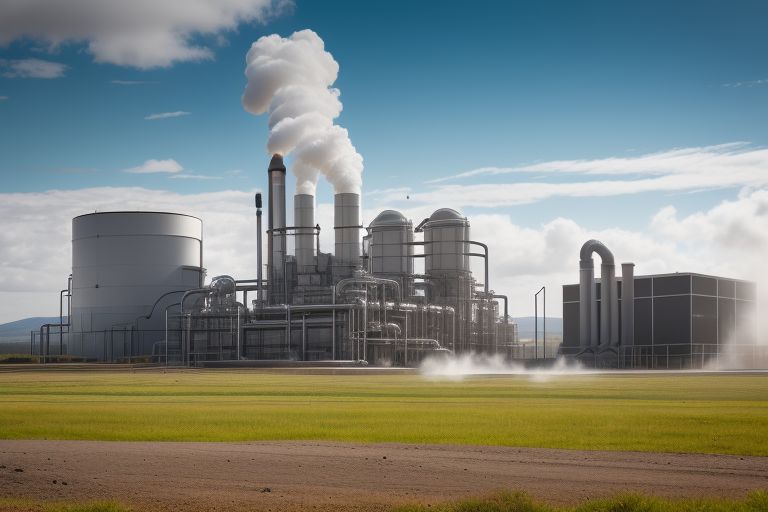
3. Introduction to Geothermal Energy
Geothermal energy is a renewable energy source that harnesses the heat stored beneath the Earth’s surface to generate electricity, provide heating, and support various industrial processes. This energy is derived from the Earth’s natural heat, which is continuously produced by the decay of radioactive elements in the planet’s core. Geothermal systems tap into this heat through wells or other technologies, making it a reliable and sustainable energy solution.
Geothermal energy stands out for its ability to provide a consistent and stable energy supply, unaffected by weather conditions or time of day. This makes it a valuable component of the renewable energy mix, particularly in regions with significant geothermal activity. In this section, we will explore the basics of geothermal energy, its technologies, applications, and the benefits it brings to construction and energy systems.
Key Points:
a. Definition:
Geothermal energy is derived from the natural heat stored beneath the Earth’s surface. This heat, originating from the Earth’s core and mantle, can be harnessed through wells or other technologies to generate electricity, provide heating, and support cooling systems. The process involves extracting hot water or steam from underground reservoirs and using it to power turbines for electricity generation or directly for heating applications. Geothermal systems can operate continuously, tapping into the Earth’s reliable and consistent heat.
b. Importance:
Geothermal energy is a stable and dependable energy source that stands out for its continuous operation, unlike other renewables that are weather-dependent, such as solar and wind power. Its ability to provide a consistent and reliable supply of energy makes it an excellent option for base-load power generation, crucial for meeting constant energy demands. Additionally, geothermal energy has a minimal environmental impact compared to other energy sources. It boasts low greenhouse gas emissions and requires relatively small land areas for installation, making it a highly sustainable and eco-friendly solution for a range of energy needs, from residential heating to large-scale electricity production.
Reflection Element:
Reflect on the ways that geothermal energy can be integrated into construction projects to improve energy efficiency and sustainability.
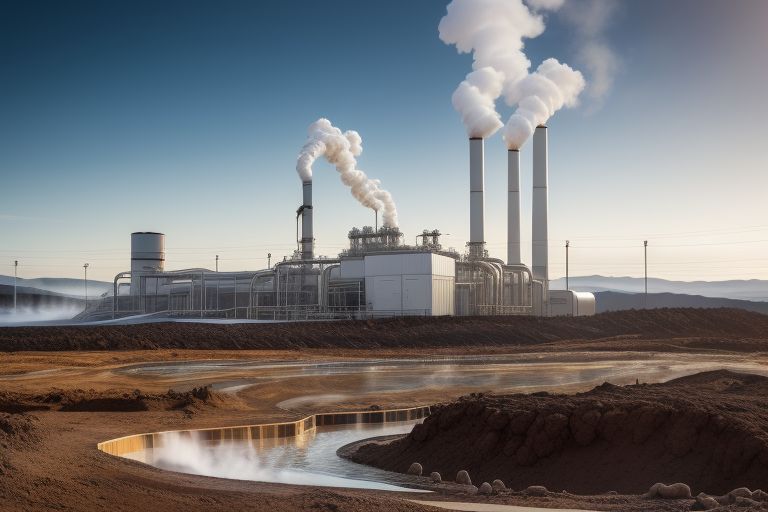
4. Geothermal Energy Technologies and Applications
This section explores the various technologies and applications of geothermal energy, highlighting how it can be effectively utilized in both residential and industrial settings. Geothermal energy harnesses the Earth’s natural heat for multiple uses, from generating electricity to heating buildings and supporting industrial processes. Understanding these technologies and their applications is essential for integrating geothermal solutions into construction projects, enhancing energy efficiency, and reducing environmental impact. In this section, we’ll delve into the types of geothermal systems, their specific uses, and the benefits they bring to the table.
Key Points:
a. Geothermal Heat Pumps
Geothermal heat pumps, also known as ground-source heat pumps, utilize the relatively constant temperatures found just below the Earth’s surface to provide efficient heating and cooling for buildings. These systems consist of three main components:
-
- Ground Heat Exchanger: A network of pipes buried in the ground, through which a heat transfer fluid circulates. The exchanger absorbs or dissipates heat from the ground, depending on the season.
- Heat Pump Unit: Located inside the building, this unit extracts heat from the fluid (in winter) or transfers heat to the fluid (in summer) and pumps it through the distribution system.
- Distribution System: This system, which can be ductwork for forced-air systems or pipes for radiant floor heating, distributes the conditioned air or water throughout the building.
In winter, geothermal heat pumps extract heat from the ground and transfer it into the building. In summer, the process is reversed: the system extracts heat from the building and releases it back into the ground, cooling the interior space.
Applications:
-
- Residential Buildings: Geothermal heat pumps are increasingly popular in homes due to their energy efficiency and ability to provide consistent comfort throughout the year. They can handle all heating, cooling, and hot water needs in a residential setting.
- Commercial Buildings: Businesses and office buildings benefit from geothermal heat pumps through lower energy bills and enhanced comfort. These systems are suitable for various commercial spaces, including retail, offices, and multi-family dwellings.
- Institutional Buildings: Schools, hospitals, and government buildings use geothermal heat pumps to manage large-scale heating and cooling needs efficiently. These systems contribute to energy savings and sustainability goals in institutional settings.
b. Geothermal Power Plants
Geothermal power plants harness the Earth’s natural heat to generate electricity by accessing geothermal reservoirs of hot water and steam. There are three main types of geothermal power plants, each utilizing different methods to convert geothermal energy into electrical power:
-
- Dry Steam Plants:
- Process: These plants use steam that is extracted directly from geothermal reservoirs. The steam is directed to a turbine, which drives a generator to produce electricity.
- Advantages: Dry steam plants are the simplest and most efficient type of geothermal power plant. They have a straightforward design and operate with high efficiency.
- Ideal For: Locations with high-temperature geothermal reservoirs where steam is readily available.
- Flash Steam Plants:
- Process: Flash steam plants take high-pressure hot water from geothermal reservoirs and reduce its pressure, causing a portion of the water to “flash” into steam. This steam is then used to drive a turbine connected to a generator.
- Advantages: Flash steam plants can use geothermal fluids that are at lower temperatures than those required for dry steam plants. They are effective in a wider range of geothermal conditions.
- Ideal For: Areas with moderate to high-temperature geothermal resources.
- Binary Cycle Plants:
- Process: In binary cycle plants, geothermal hot water is passed through a heat exchanger, where its heat is transferred to a secondary fluid with a lower boiling point. This secondary fluid vaporizes and drives a turbine connected to a generator. The geothermal water is then returned to the reservoir.
- Advantages: Binary cycle plants can operate with lower-temperature geothermal resources and have minimal emissions since the geothermal fluid is not released into the atmosphere.
- Ideal For: Locations with lower-temperature geothermal resources and where environmental concerns are a priority.
- Dry Steam Plants:
Applications:
-
- Large-Scale Power Generation: Geothermal power plants are suitable for generating significant amounts of electricity for the electrical grid. They are particularly effective in regions with high geothermal activity, such as volcanic areas and tectonic plate boundaries.
- Sustainable Energy Production: These plants contribute to sustainable energy by providing a reliable and constant source of power, independent of weather conditions or time of day, and by minimizing greenhouse gas emissions compared to fossil fuel-based power plants.
c. Direct Use Applications
Direct use applications of geothermal energy involve utilizing geothermal hot water directly for heating purposes and other applications, without the need to convert it into electricity. This method takes advantage of the high temperatures found in geothermal reservoirs to provide heat for various uses, directly tapping into the geothermal resource.
Applications:
-
- District Heating Systems:
- Description: Geothermal hot water is used to supply heat to multiple buildings or an entire district through a network of insulated pipes. This system distributes hot water from a central geothermal source to residential and commercial buildings for space heating and domestic hot water.
- Benefits: Provides a consistent and efficient heating solution, reduces reliance on fossil fuels, and lowers heating costs for consumers.
- Greenhouses:
- Description: Geothermal heat is used to regulate the temperature within greenhouses, creating an optimal environment for growing plants. This application helps extend the growing season and increases agricultural productivity.
- Benefits: Enhances crop yields, reduces energy costs compared to traditional heating methods, and supports sustainable agricultural practices.
- Fish Farms (Aquaculture):
- Description: Geothermal energy is used to heat water in fish farms, providing a stable temperature for optimal growth and health of aquatic species. This method can improve fish growth rates and overall production efficiency.
- Benefits: Ensures a consistent environment for fish, improves production efficiency, and reduces energy costs associated with heating.
- Industrial Processes:
- Description: Geothermal hot water is used directly in various industrial processes, such as drying agricultural products, pasteurizing dairy products, or providing heat for manufacturing processes. The high temperatures can accelerate processes and improve efficiency.
- Benefits: Reduces energy costs, supports industrial productivity, and minimizes reliance on non-renewable energy sources.
- District Heating Systems:
Benefits:
-
- Efficiency: Direct use of geothermal energy eliminates the need for energy conversion processes, leading to more efficient utilization of the geothermal resource.
- Sustainability: Provides a clean and renewable energy source, reducing greenhouse gas emissions and supporting sustainable practices across various sectors.
- Cost Savings: Direct use applications can lower operational costs by utilizing geothermal resources directly, avoiding the expenses associated with energy conversion and transportation.
c. Benefits
1. Efficiency:
Geothermal systems are highly efficient because they leverage the stable temperatures found just below the Earth’s surface. Unlike other energy sources that may fluctuate with weather conditions or time of day, geothermal energy provides a consistent and reliable source of heat and cooling throughout the year. This stability ensures that geothermal systems operate effectively and efficiently regardless of external environmental factors.
2. Sustainability:
Geothermal energy is a sustainable and eco-friendly option due to its minimal impact on the environment. These systems produce low greenhouse gas emissions compared to fossil fuels, making them an excellent choice for reducing carbon footprints. Additionally, geothermal energy requires significantly less land use than other energy sources, and its environmental footprint is relatively small, contributing to its appeal as a sustainable energy solution.
3. Cost Savings:
Geothermal energy systems can result in substantial long-term savings on heating and cooling costs. Although the initial investment for geothermal technology can be high, the operational and maintenance costs are relatively low. Over time, these systems can offer significant savings compared to conventional fossil fuels. The efficiency and reliability of geothermal energy contribute to these cost savings, making it a financially advantageous option in the long run.
Reflection Element:
Reflect on how a building or facility using geothermal heat pumps can improve efficiency and the cost benefits that can be achieved.
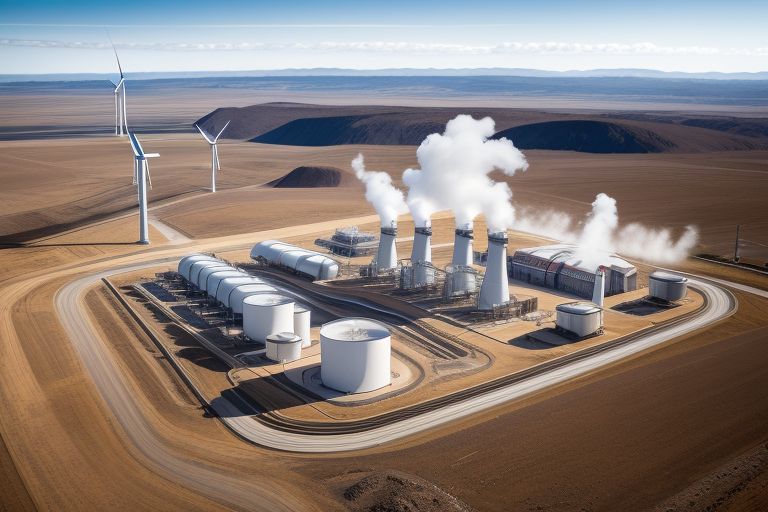
5. Challenges and Considerations
While wind and geothermal energy offer significant benefits as sustainable energy solutions, there are challenges and considerations associated with their implementation. Understanding these factors is crucial for optimizing the deployment of these technologies in construction and energy projects. This section will explore the common obstacles, such as site suitability, environmental impact, and financial considerations, along with strategies to address these challenges effectively, ensuring the successful integration of wind and geothermal energy systems.
Key Points:
a. Wind Energy Challenges
1. Intermittency
Wind energy generation is inherently variable, as it depends on the availability and consistency of wind. Wind speeds can fluctuate significantly, leading to periods of low or no energy production, particularly on calm days. This variability can pose challenges for maintaining a steady and reliable energy supply. To address this issue, backup power sources or energy storage solutions are often required to ensure a continuous power supply and to stabilize the grid when wind conditions are not optimal.
2. Noise and Aesthetics
Wind turbines generate noise during operation, which can be a concern in residential areas or places with sensitive acoustics. The sound produced by the blades as they pass through the air and the mechanical noise from the turbine machinery can potentially disrupt nearby communities. Additionally, the visual impact of wind turbines, especially in scenic or heritage landscapes, may be met with resistance from local residents and stakeholders. The placement of turbines must therefore consider both auditory and visual impacts to address community concerns and minimize opposition.
3. Site Selection
Effective site selection is critical for maximizing wind energy production and minimizing environmental impact. Identifying optimal locations involves comprehensive assessments of wind patterns, topography, and potential environmental effects. It is essential to evaluate how wind turbines may affect local wildlife, particularly bird and bat populations, to avoid ecological disruption. Careful planning and site evaluation help to ensure that wind farms operate efficiently while minimizing negative impacts on the surrounding environment and ecosystems.
b. Geothermal Energy Challenges
1. Initial Costs
The initial investment for geothermal energy systems can be significant. Drilling wells to access geothermal reservoirs, along with the installation of the necessary equipment, requires a substantial upfront capital. The cost is especially high in regions where geothermal resources are deeper or less accessible. This initial expenditure can be a barrier to adoption, particularly for smaller projects or in areas with limited financial resources.
2. Resource Location
Geothermal energy is highly dependent on location, with optimal resources typically found in geologically active areas such as volcanic or tectonic zones. This geographical specificity means that not all regions have suitable geothermal resources, limiting the widespread applicability of geothermal systems. As a result, the potential for geothermal energy development is constrained to certain areas, and the benefits may not be equally distributed across different locations.
3. Maintenance
Geothermal systems require ongoing maintenance to ensure reliable operation and longevity. Regular tasks include monitoring fluid levels, inspecting for leaks, and ensuring that heat exchangers and pumps are functioning correctly. Maintenance is crucial to prevent issues such as mineral scaling, equipment degradation, or system inefficiencies. Effective long-term management and maintenance strategies are essential to sustain system performance and avoid costly repairs or replacements.
These challenges underscore the importance of careful planning, innovative technologies, and effective management strategies in optimizing the use of geothermal energy. Addressing these issues can help enhance the feasibility and efficiency of geothermal systems in construction and broader energy applications.
Reflection Element:
Reflect on potential solutions to common challenges faced by wind and geothermal energy projects, and brainstorm strategies for overcoming these issues.
In this lesson, we’ve explored the innovative applications of wind and geothermal energy in construction, delving into the technologies, benefits, and challenges associated with these renewable energy sources. Wind and geothermal energy offer powerful solutions for reducing reliance on fossil fuels, enhancing energy efficiency, and supporting sustainable development. By understanding these technologies, their applications, and the considerations needed for successful integration, you are better equipped to incorporate renewable energy solutions into future projects.
As we conclude this lesson, take the time to review the key concepts and reflect on how wind and geothermal energy can be utilized effectively in construction. To reinforce your learning, please proceed to the quiz for Lesson 8. This quiz will cover the topics from both solar, wind, and geothermal energy sections, helping you assess your understanding and prepare you for practical applications.
Good luck, and continue your journey towards mastering renewable energy solutions in construction!

